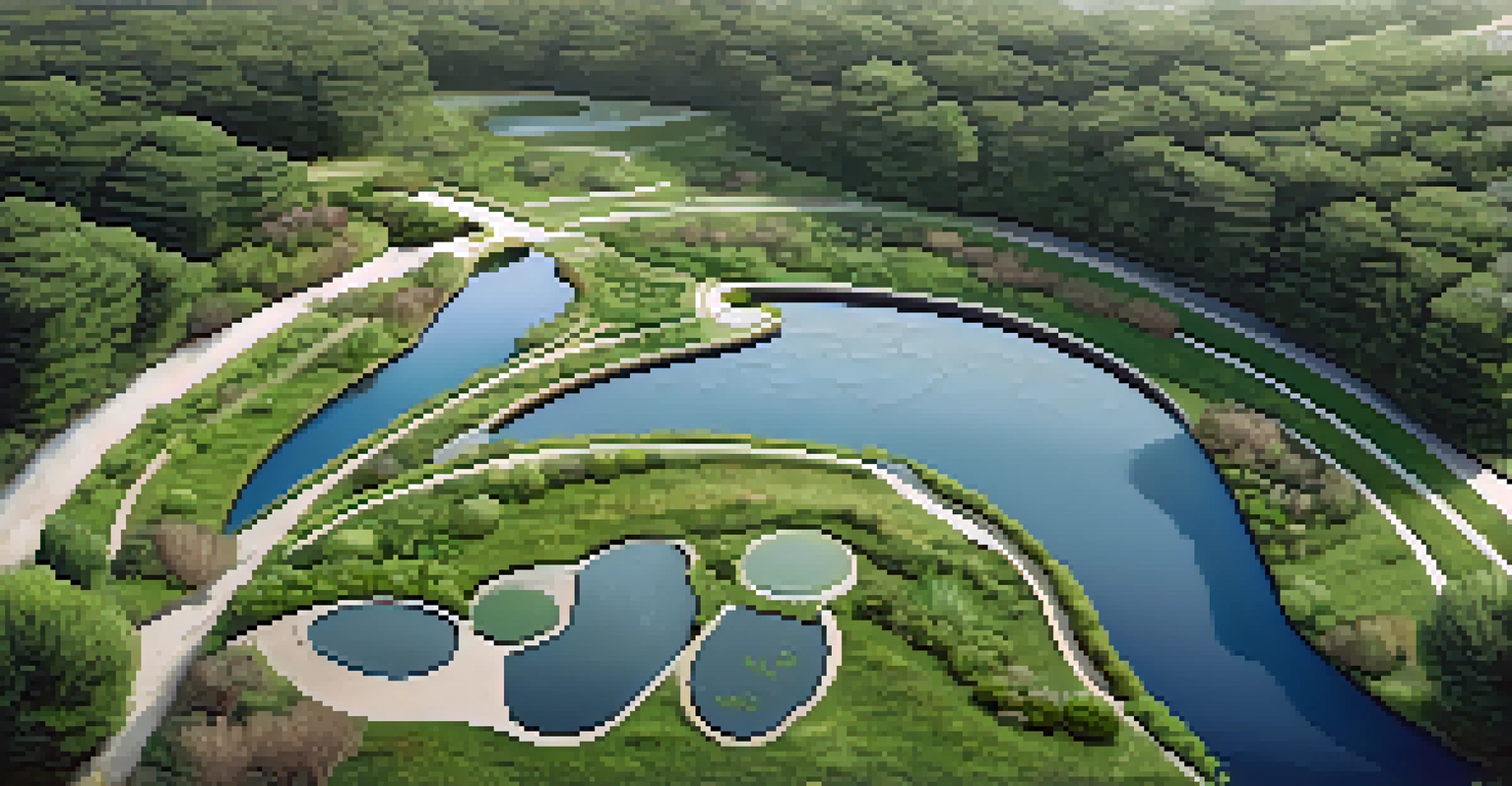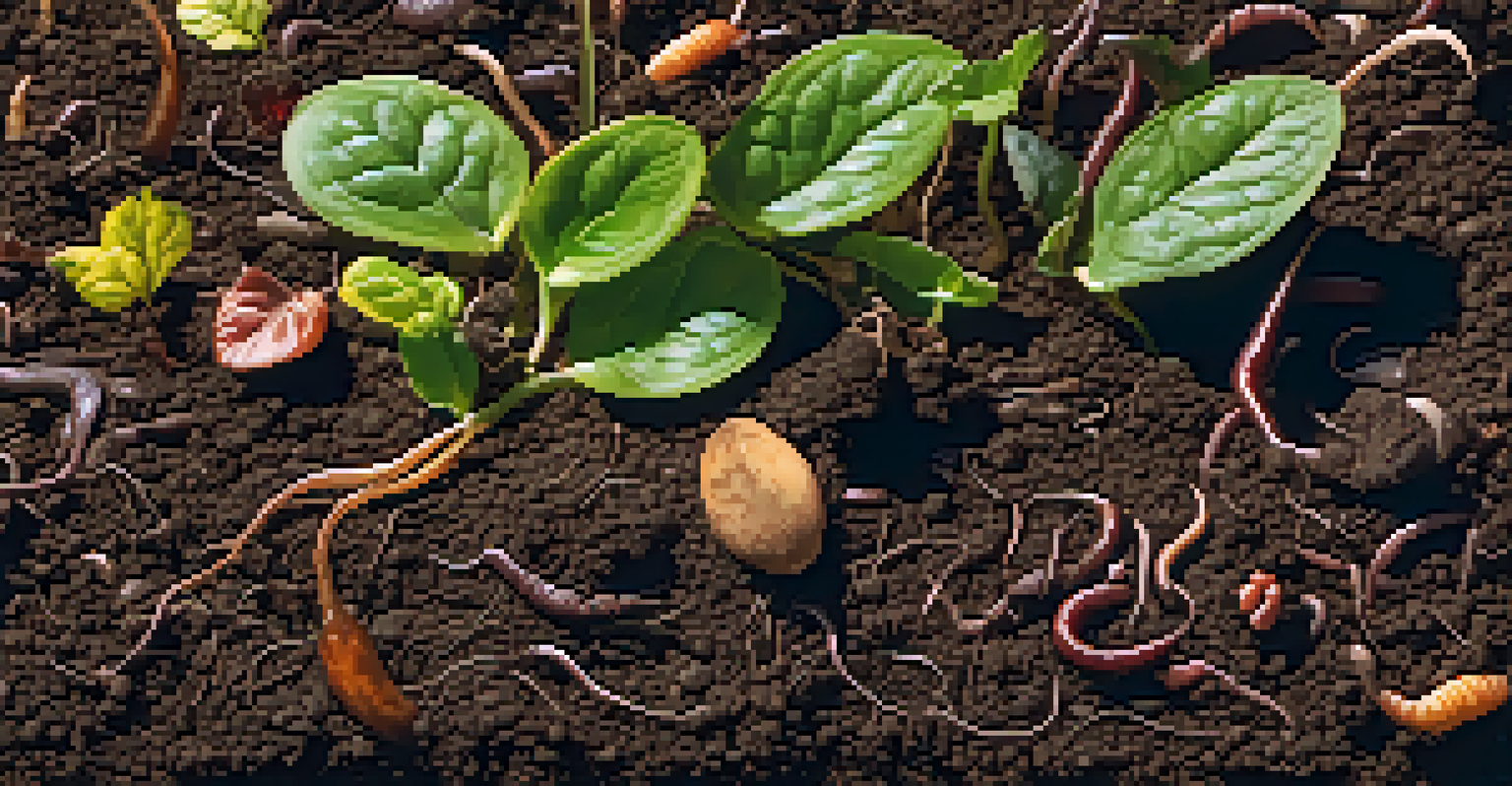Permaculture Principles: Designing Sustainable Landscapes for All

Understanding Permaculture: A Holistic Approach to Design
Permaculture is a design philosophy that mimics the natural ecosystems found in nature. By observing how nature operates, we can create sustainable landscapes that are both productive and self-sustaining. This approach not only benefits the environment but also empowers communities by fostering local resilience and self-sufficiency.
The ultimate goal of farming is not the growing of crops, but the cultivation and perfection of human beings.
At its core, permaculture emphasizes the interconnectedness of all elements within a system. Every aspect—from soil health to water management—plays a crucial role in the overall success of the landscape. This holistic view encourages us to think beyond individual components and consider how they work together.
By applying permaculture principles, we can design landscapes that require less energy and resources while providing food, shelter, and beauty. This interconnected approach ultimately leads to more sustainable living practices, benefiting both people and the planet.
The Principle of Observation: Learning from Nature
One of the first principles of permaculture is observation. Taking the time to observe your landscape allows you to understand its unique characteristics, such as sunlight patterns, wind direction, and water flow. This knowledge is invaluable when designing a sustainable system that works with, rather than against, nature.

For instance, if you notice that a particular area retains water well, it might be an ideal spot for a rain garden or a pond. Conversely, if some areas are prone to flooding, you can design swales to redirect excess water. Observing these natural patterns helps you make informed decisions that enhance your landscape's functionality.
Permaculture Mimics Nature
By observing natural ecosystems, permaculture designs sustainable landscapes that are self-sustaining and beneficial to the environment.
Ultimately, this principle teaches us to be patient and attentive. By slowing down and truly engaging with our surroundings, we can create designs that harmonize with the environment, leading to better outcomes for both our landscapes and ourselves.
Designing for Diversity: The Power of Plant Variety
Diversity is a fundamental principle of permaculture, promoting the idea that a range of plants can create a more resilient ecosystem. Instead of monoculture—growing a single crop—permaculture encourages planting a variety of species that can support each other. This diversity can enhance soil health, attract beneficial insects, and reduce pest problems.
In nature, nothing exists alone.
For example, a diverse garden might include fruit trees, vegetables, herbs, and flowers all growing together. This not only provides a bounty of food but also creates habitats for pollinators and other wildlife. By fostering a rich tapestry of life, we can strengthen our landscapes against diseases and environmental changes.
Moreover, diverse ecosystems often yield greater productivity. By using companion planting strategies—where certain plants benefit each other—gardeners can maximize space and resources. This principle encourages us to think creatively about how to integrate various plants into our landscapes for optimal results.
Energy Efficiency: Using Resources Wisely
In permaculture, energy efficiency is about leveraging natural resources to minimize waste and maximize productivity. This means designing landscapes that require less water, fertilizer, and energy input while maintaining their health and productivity. By working with natural systems, we can create sustainable environments that thrive with minimal intervention.
For instance, rainwater harvesting systems can be installed to collect and store water for irrigation, reducing reliance on municipal supplies. Similarly, incorporating perennial plants—those that come back year after year—can lower maintenance costs and improve soil structure over time. These strategies illustrate how thoughtful design can lead to significant resource savings.
Diversity Enhances Resilience
Integrating a variety of plant species in permaculture promotes healthier ecosystems, boosts productivity, and supports biodiversity.
Additionally, permaculture encourages the use of renewable energy sources, such as solar panels or wind turbines, to power our landscapes. By integrating these systems, we can create a self-sustaining environment that not only supports our needs but also reduces our ecological footprint.
Soil Health: The Foundation of Sustainable Landscapes
Healthy soil is vital for any successful permaculture design. It serves as the foundation for plant growth, water retention, and nutrient cycling. To build soil health, permaculture practices often focus on composting, mulching, and rotating crops to improve soil structure and fertility.
For example, by adding organic matter like compost or leaf litter, we can enhance soil biology, which in turn helps plants access essential nutrients. This practice not only supports plant growth but also fosters a thriving ecosystem of microorganisms and insects that contribute to soil health. It’s a win-win situation!
Moreover, healthy soil acts as a sponge, retaining water and reducing erosion. By prioritizing soil health in our designs, we can create landscapes that are resilient to droughts and floods, ensuring they remain productive and vibrant for years to come.
Water Management: Creating Efficient Systems
Water management is another critical aspect of permaculture, as it directly impacts the health of our landscapes. Effective water management techniques, such as swales, ponds, and rain gardens, can help capture and retain water, reducing the need for irrigation. This not only conserves water but also ensures that it is available for plants when they need it most.
For instance, swales—shallow ditches on contour—can slow down water runoff, allowing it to soak into the ground instead of washing away. Similarly, creating a pond can provide a habitat for wildlife while storing excess rainwater for dry periods. These techniques are examples of how we can work with nature to enhance our landscapes.
Community Builds Sustainable Practices
Engaging local communities in permaculture fosters collaboration and shared knowledge, leading to stronger, more resilient ecosystems.
By implementing smart water management strategies, we can increase the resilience of our gardens and landscapes. This principle not only helps us make the most of available water resources but also contributes to overall ecosystem health, providing benefits for both people and wildlife.
Community Involvement: Building Connections
Permaculture is not just about individual gardens; it’s also about fostering community connections. Engaging with local communities can transform landscapes into vibrant, sustainable ecosystems that benefit everyone. By sharing knowledge, resources, and experiences, we can create networks that support permaculture practices on a larger scale.
For example, community gardens can serve as hubs for education and collaboration, allowing neighbors to learn from one another and share their successes. These spaces promote biodiversity while also providing fresh produce for those involved. Connecting through permaculture principles can strengthen relationships and enhance community resilience.

Moreover, working together on projects can amplify the impact of our efforts. By pooling resources and ideas, communities can develop more comprehensive solutions to local challenges, whether it’s food security, environmental degradation, or social isolation. This principle demonstrates the power of collective action in creating sustainable landscapes for all.